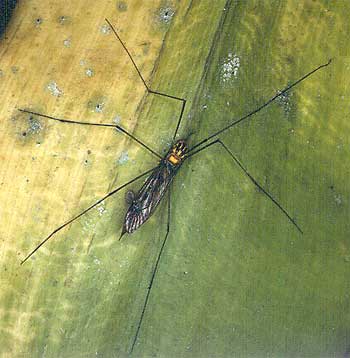
|
TIPULIDAE Crane Flies |
|
| ||||||||||||
|
Most flies in this family are easily recognised by their slender bodies and long lanky legs which sometimes gives them the common name of daddy-long-legs. Crane flies are often mistaken for giant sized mosquitoes and although they often fly into houses attracted by the lights, they are in fact harmless and do not feed on blood. In fact aside from the odd drink, most adult crane flies are not known to feed at all. The larvae are predominantly known to feed on decaying vegetable matter, although some species may feed on small invertebrates. Crane flies prefer moist environments with abundant vegetation and some species only occur in very narrowly restricted habitats. Adults can often be found resting on foliage and overhanging banks in damp, shady environments and one species in particular appears to favour resting on spider webs. The larvae of many crane flies are aquatic, with some species found in damp soil and compost. When fully mature the larvae pupate in drier soil emerging as a fully developed adult. Crane flies are easily caught as their flight is often slow and clumsy. However they are very delicate and anyone that has captured one would have noticed that their legs virtually break off at the slightest touch.
For more crane fly species visit the Australian Insect Common Names |
